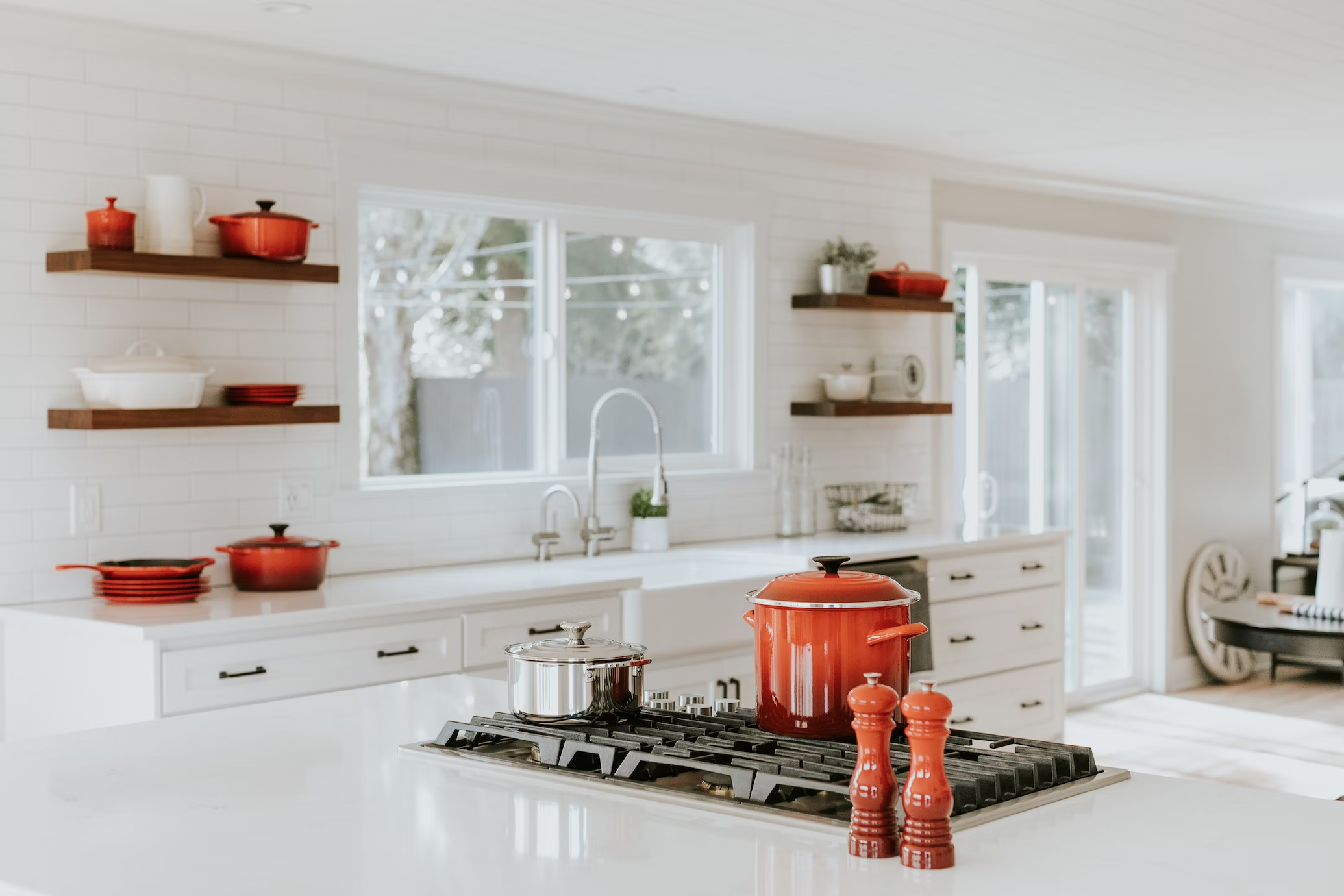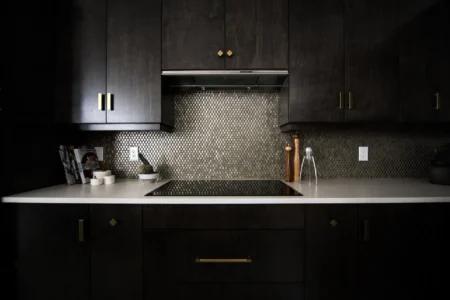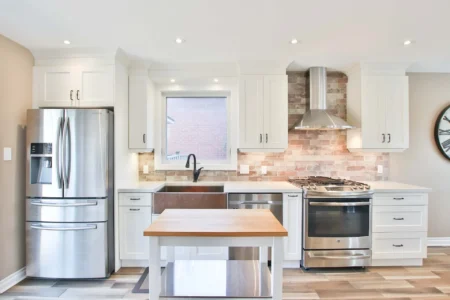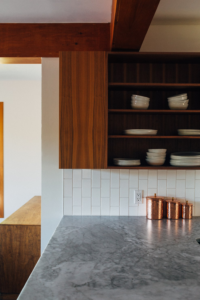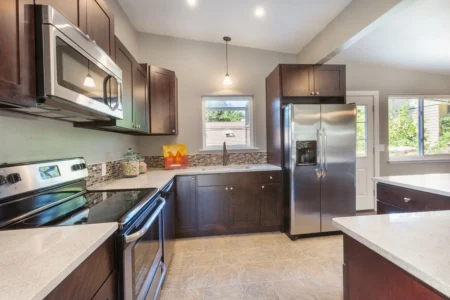The kitchen is the heart of the home, a place where culinary creativity comes to life and family memories are made. One of the key elements that can significantly enhance the aesthetics of your kitchen is the splashback tile. Choosing the right tile for your kitchen splashback is not just about functionality, but also about adding a touch of your personal style to the space. This guide will help you navigate through the various options available, and assist you in selecting the perfect tile that complements your kitchen decor.
Exploring Different Types of Kitchen Splashback Tiles
Before we delve into the specifics, it’s essential to understand the different types of tiles available for your kitchen splashback. Each type has its unique characteristics, aesthetics, and benefits.
- Ceramic Tiles: Ceramic tiles are a popular choice due to their versatility and durability. They come in a variety of colors, patterns, and finishes, allowing you to customize your kitchen to your liking. Plus, they’re easy to clean, which is a significant advantage in a cooking area.
- Porcelain Tiles: Porcelain tiles are known for their strength and stain resistance. They’re denser than ceramic tiles, making them a great option for kitchens that see a lot of action. Their low porosity means they’re less likely to absorb liquids, reducing the risk of staining.
- Glass Tiles: If you’re aiming for a modern, sleek look, glass tiles might be your best bet. They reflect light, making your kitchen appear brighter and larger. However, they can show smudges and water spots, so they may require more frequent cleaning.
- Stone Tiles: For a rustic, natural look, consider stone tiles. Materials like granite, marble, and slate add a unique, earthy touch to your kitchen. Keep in mind, though, that they require sealing to prevent stains and moisture absorption.
- Metal Tiles: Metal tiles, such as stainless steel or copper, can give your kitchen a contemporary, industrial feel. They’re durable and easy to clean, but they can also show scratches and fingerprints.
Each of these tile types has its pros and cons, and the best one for you will depend on your kitchen’s style, your budget, and your personal preferences.
Color Considerations: Picking the Right Shade for Your Splashback Tiles
After understanding the types of tiles, the next step is to consider the color. The color of your splashback tiles can dramatically influence the overall look and feel of your kitchen. Here are some points to consider:
- Matching or Contrasting: You can either match the color of your tiles with your kitchen cabinets and countertops for a seamless look or choose a contrasting color to create a striking visual impact. Both approaches have their unique charm; it’s all about what suits your personal style.
- Light or Dark: Light-colored tiles can make a small kitchen appear larger and brighter, while dark tiles can add depth and sophistication to a spacious kitchen. However, dark tiles may show stains and smudge more readily than light ones.
- Neutral or Bold: Neutral colors like white, beige, or gray are timeless and versatile, and they can easily blend with any kitchen decor. On the other hand, bold colors like red, blue, or green can make a strong style statement and add a vibrant touch to your kitchen.
- Solid or Patterned: Solid-colored tiles offer a clean, minimalist look, while patterned tiles can add a lot of character and visual interest to your kitchen. If you’re opting for patterned tiles, make sure the pattern complements the rest of your kitchen decor.
- Glossy or Matte: Glossy tiles reflect light and can make your kitchen look brighter, but they may show smudges and scratches. Matte tiles, on the other hand, offer a more subdued look and are better at hiding stains and smudges.
Remember, the color of your splashback tiles should not only match your kitchen decor but also reflect your personality and style.
The latest trends and inspirations for kitchen splashback tiles
Keeping up with the latest trends can give your kitchen a contemporary, stylish look. Here are some of the current trends in kitchen splashback tiles:
- Subway Tiles: Subway tiles are a classic choice that never goes out of style. They’re versatile, easy to clean, and can fit into almost any kitchen design. You can lay them in a traditional brick pattern, or try a herringbone or vertical layout for a modern twist.
- Geometric Patterns: Geometric patterns are currently a big trend in kitchen designs. They add a dynamic, modern touch to your kitchen. You can go for bold, large-scale patterns for a dramatic effect, or choose subtle, small-scale patterns for a more understated look.
- Terrazzo Tiles: Terrazzo tiles are making a comeback. They’re a mix of marble, quartz, granite, and glass, offering a unique, speckled look. Terrazzo tiles are durable, easy to maintain, and available in a wide range of colors and patterns.
- Mosaic Tiles: Mosaic tiles allow you to create a unique, intricate design on your splashback. They come in various materials, including glass, ceramic, and stone, and can be arranged in endless patterns and designs.
Maintaining Your Kitchen Splashback: The Role of Tile Material
Maintaining the pristine look of your kitchen splashback is as important as choosing the right tile. The material of your tile plays a crucial role in determining the level of maintenance required. Here’s how different tile materials fare when it comes to upkeep:
- Ceramic and Porcelain Tiles: Both ceramic and porcelain tiles are relatively easy to maintain. They are resistant to stains and can be cleaned with a simple mixture of warm water and mild detergent. However, the grout lines between these tiles can accumulate dirt over time, so regular cleaning is necessary to keep them looking fresh.
- Glass Tiles: Glass tiles are non-porous, making them resistant to stains and mold. They can be easily wiped clean with a glass cleaner. However, they tend to show water spots and fingerprints, so frequent cleaning might be required to keep them looking their best.
- Stone Tiles: Stone tiles, such as granite, marble, or slate, require more maintenance. They are porous and can absorb liquids, leading to stains. Regular sealing is necessary to maintain their look and prevent damage. Cleaning should be done with a stone-safe cleaner to avoid damaging the natural stone.
- Metal Tiles: Metal tiles are durable and easy to clean. They can be wiped clean with a soft cloth and mild detergent. However, they can show scratches and fingerprints, so they may need frequent polishing to maintain their shine.
- Terrazzo Tiles: Terrazzo tiles are durable and easy to maintain. Regular sweeping and mopping with a neutral cleaner are usually enough to keep them looking good. However, like stone tiles, they may require periodic sealing to prevent staining.
In conclusion, the material of your splashback tiles can significantly impact the amount of maintenance required. Therefore, when choosing your tiles, consider not only their aesthetic appeal but also the time and effort you’re willing to put into their upkeep.
Conclusion
Selecting the right tile for your kitchen splashback is a journey that combines practicality, personal style, and a touch of creativity. From exploring different types of tiles and considering the right color to keeping up with the latest trends and understanding the role of the tile material in maintenance, every step is crucial in creating a kitchen space that is both functional and aesthetically pleasing.
Remember, your kitchen is a reflection of your lifestyle and personality. Whether you prefer the classic charm of subway tiles, the modern appeal of geometric patterns, or the rustic elegance of stone tiles, there’s a perfect tile out there for your kitchen splashback.
Moreover, maintenance is a key factor that should not be overlooked. The material of your tile will determine the upkeep required to keep your splashback looking its best. So, choose a tile that not only enhances your kitchen’s look but also aligns with your cleaning habits.
Frequently Asked Questions (FAQs)
What is a splashback and why do I need one?
A splashback is a protective barrier installed behind a kitchen stove, sink, or other food preparation areas. Splashbacks are usually made from glass, ceramic tile, or stainless steel. They help to prevent water and other liquids from damaging the wall behind them. They also add style and personality to your kitchen, as you can choose from a variety of colours, patterns, and materials.
How do I measure the area for my splashback tiles?
You need to measure the width and height of the space you want to cover with tiles. To calculate how many square meters of tiles you’ll need, multiply the length by the width of the area. Measure the size of the tiles and the tile spacers as well. Calculate how many tiles you’ll need to cover the length and the width of the area. Don’t forget to include the spacers measures. Usually, they’re 1.5 mm in width but don’t make assumptions, measure them yourself. You can keep a 4 mm gap on the external side for caulking later. It’s a good idea to buy 15% more tiles than what you’ve calculated you’ll need, in case of breakages or mistakes.
How do I choose the right material, colour and pattern for my splashback tiles?
There are many factors to consider when choosing your splashback tiles, such as your budget, your kitchen style, your personal preference, and your maintenance needs. Some of the most common materials for splashback tiles are porcelain, ceramic, stone, glass, and metal. Each one has its own advantages and disadvantages in terms of durability, cost, appearance, and ease of cleaning. For example, porcelain and ceramic tiles are affordable, versatile, and easy to install, but they can crack or chip if not handled carefully. Stone tiles are natural, elegant, and durable, but they can be expensive, heavy, and porous, requiring sealing and regular cleaning. Glass tiles are modern, sleek, and reflective, but they can be pricey, hard to cut, and prone to fingerprints and smudges.
How do I maintain my splashback tiles?
To keep your splashback tiles clean and shiny, you need to wipe them regularly with a damp cloth or a mild detergent. Avoid using abrasive cleaners or scouring pads that can scratch or damage the tile surface. You can also use a glass cleaner or a vinegar solution to remove any grease or water stains from glass or metal tiles. To prevent mould and mildew from growing on the grout, you need to seal it with a grout sealer every year or as recommended by the manufacturer. You can also use a bleach solution or a commercial mould remover to clean any discolored or stained grout. If any tiles get cracked or chipped, you can replace them with new ones using the same installation method
